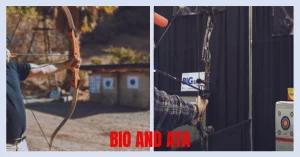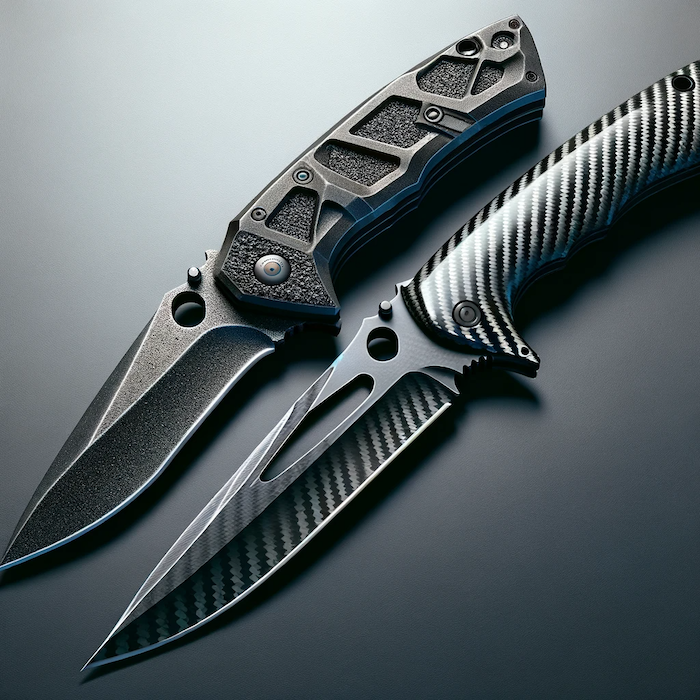We may earn money or products from the companies mentioned in this post.
Introduction
Have you seen the ata and ibo specifications on bows? But you might be confused by the varying figures provided by the different associations. Tried to figure out which one was the better standard but failed to do so? Well, you’re in luck because we cover this in detail.
In a hypothetical match of ata vs ibo, which standard is the winner?
The speeds of ATA and IBO are significantly different. ATA recommends that bows weigh 70 lbs, and have draw lengths of 5 grains per pound. IBO speed is typically thought to be tested at 70/30. However, the IBO guidelines allow for speeds to be tested as high as 82 lbs.
Has the above peek into the article removed some of the confusion that you had? If so, then waste no more time and dig deep into the article.

ATA vs IBO Guidelines
The guidelines that ATA and IBO set for measuring bow speed are given below.
| Factors | ATA | IBO |
| Bow weight | 70 pounds +/- .2 | 80 pounds +/-2 lbs |
| Tested draw weights | 69.8-70.2 pounds | 78-82 pounds |
| Arrow weight | 5 grains per pound of draw weight | 5 grains per pound of draw weight |
| Draw length | 30″ +1/4″ – 0″ | N/A |
| Tested Bow Draw Length | Upto 30.25″ but not under 30″ | N/A |
We hope this helps in removing some of the confusion between ATA and IBO bows. If you’re trying to adjust bowtech draw length then follow the table.
ATA vs IBO: Detailed Overview
ATA is an acronym for Archery Trade Association. It is a business association that represents the archery and bowhunting sector's producers, merchants, and wholesalers. The ATA is a non-profit company that aids numerous groups in the archery business.
IBO is an abbreviated form for the International Bowhunting Organization. It is a 3D archery association largely located in the Eastern United States. Throughout the Eastern United States, they conduct a variety of competitive shoots. The IBO hosts the following competitions:
- Winter National
- Spring National
- Triple Crown
- 1st leg National Championship
- 2nd leg National Championship
- 3rd leg National Championship
- IBO World Championship
- Mid America Traditional Tournament
- West Coast Traditional Tournament
- Traditional World Championship
These are the kinds of contests that the IBO puts on. Typically, there seem to be 2-D or 3-D animal targets. These 3-D targets have different scores which include official IBO scoring zones.
Bow Draw Weight
For hunting big game, the ATA suggests stated draw weights of 30lb, 35lb, and 40lb. The figure may vary for states that want to establish a minimum draw weight guideline. In the case of conventional big game hunting, the optimum suggested draw weight is 30 lb. However, when evaluating bow speed, ATA advises a draw weight of 70 lb.
When evaluating for velocity, IBO utilizes bows with a draw weight of 80 lb. They permit a maximum value discrepancy of up to 2 pounds.
Arrow Weight
The industrial norm for determining projectile masses is grains per inch. The GPI of an arrow influences the mass of the arrow tip. It comprises the length, size, inner diameter, and core substance of the projectile.
Grains per inch and grains per pound are sometimes misread. However, the computations differed significantly. Since grains per pound is the overall mass of the arrow split by the bodyweight of the bow for firing. The weight of the shaft, nock, insert, point, and fletchings are included in the grains per pound total.
With every pound of draw weight, a light projectile has a completed grain per lb of 5 to 6.5 grains. Arrows weighing more than 8 grains are considered heavy. Nonetheless, the ATA and IBO both advise 5 grains per pound of draw weight for projectiles. Arrow weights matter more than most people actually realize.
Therefore, when testing for speed, arrows used by ATA have a maximum weight of 350 grains. Whereas arrows used by IBO have a maximum weight of 400 grains.
Draw Length
The “Draw Length to Pivot Point” is used to calculate the Minimum Draw Length by ATA. This is the space between the nock position of the thread and the pivot point of the handle.
Then, to the estimated draw length, add 1 and 3/4 inches. Draw lengths for ATA accommodating bows should be 30′′ +1/4′′ – 0′′. A certified bow's ultimate draw length can reach 30.25″. However, it should not be less than 30′′ under any circumstances.
IBO doesn’t have any standard draw lengths that can be followed when measuring for speed. You can even use a bow with a draw length of 35” for testing IBO speeds.
These specifications should help you in differentiating elite and hoyt bows.
FAQs
Question: What is an appropriate foot per second rate for a hunting bow?
Answer: The more perceptible the plot, the faster the arrow. Even with today's low-profile, fixed-blade tips, a maximum arrow speed of 260-270 fps is recommended. Broadhead aiming becomes tough after that for all but the most proficient archers.
Question: Which bow is the most powerful?
Answer: The Mongolian recurve bow is usually regarded as one of the most formidable bows in existence. This was developed by the Mongols in the third century. These bows were legendary for their precise accuracy at distances of over 500 yards (450+ meters). The Mongolians frequently used the bows while on horseback
Question: How far can a compound bow weigh 70 pounds shoot?
Answer: A compound bow's “maximum distance” is typically between 30 and 60 yards. It has a range of up to 1000 feet. Also, it has a maximum recorded distance shot at a point of 930.04 feet. Archers, for the most part, prefer to aim inside their appropriate limits.
Conclusion
We hope that our take on ata vs ibo has answered all of your questions.
The ata and ibo specifications that manufacturers put on their bows are unachievable by most archers. This is because the manufacturers test their bows at optimum situations and also over-estimate. There is a major reason why a lot of archers disregard this specification when choosing bows. We leave you on a good note. Happy Hunting!










